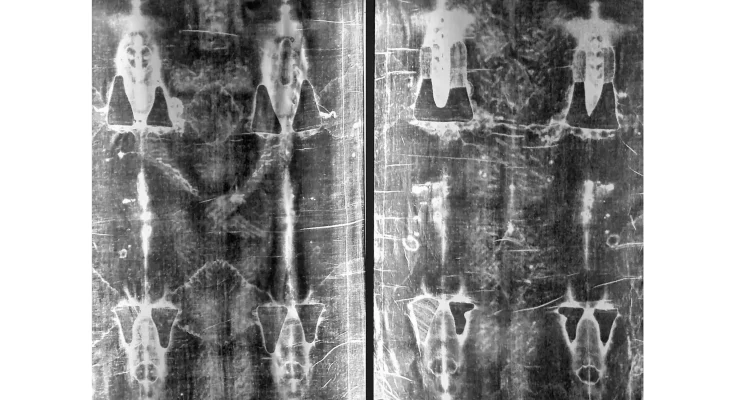I’ll begin this by saying you don’t have to be a Christian or even religious to acknowledge that the headline above isn’t hyperbole. If you’d rather look at this story from a completely secular, materialistic point of view, you can still appreciate the significance. To some of us, it’s The New Testament. To you, it could be Indiana Jones. Either way, it’s potentially a discovery of unparalleled significance.
The Shroud of Turin is nothing less than the most studied artifact in human history. And new scientific research might have just proven it’s authenticity:
Is this the image of Jesus of Nazareth?
New X-ray analysis just revealed the Shroud of Turin, Christ’s alleged burial cloth, to be 2,000 years old.
So here’s what we know — and why it might just be real… (thread) 🧵 pic.twitter.com/MGgG2pDGIK
— Culture Critic (@Culture_Crit) August 21, 2024
We’ll return to the most compelling parts of that thread. But first here’s some brief background and a description of the experiments that were just completed:
Daily Mail – When it was first exhibited in the 1350s, the Shroud of Turin was touted as the actual burial shroud used to wrap the mutilated body of Christ after his crucifixion.
Also known as the Holy Shroud, it bears a faint image of the front and back of a bearded man, which many believers is Jesus’ body miraculously imprinted onto the fabric.
But research in the 1980s appeared to debunk the idea it was real after dating it to the Middle Ages, hundreds of years after Christ’s death.
Now, Italian researchers who used a new technique involving x-rays to date the material have confirmed it was manufactured around the time of Jesus about 2,000 years ago.
They say the fact the timelines add up lends credence to the idea that the faint, bloodstained pattern of a man with his arms folded in front were left behind by Jesus’ dead body.
Markings on the body also correspond with crucifixion wounds of Jesus mentioned in the Bible, including thorn marks on the head, lacerations on the back and bruises on the shoulders. …
In 1988, a team of international researchers analyzed a small piece of the shroud using carbon dating and determined the cloth seemed to have been manufactured sometime between 1260 and 1390 AD. …
For the new study, scientists at Italy’s Institute of Crystallography of the National Research Council conducted a recent study using wide-angle X-ray scattering (WAXS).
The technique measures the natural aging of flax cellulose and converts it to time since manufacture. …
Based on the amount of breakdown, the team determined that the shroud of Turin was likely kept at temperatures at about 72.5 degrees Fahrenheit and a relative humidity of around 55 percent for about 13 centuries before it arrived in Europe.
If it had been kept in different conditions, the aging would be different.
And then there’s the news that just landed.
A new X-ray technique was used to study the aging of the linen’s flax cellulose. It found that the breakdown of the cellulose matches that of other 2,000 year old samples — not medieval ones. pic.twitter.com/YTO7rEwYil
— Culture Critic (@Culture_Crit) August 21, 2024
Also – Now, University of Padua professor Giulio Fanti has placed [the Shroud’s blood] samples under modern-day microscopes capable of highlighting details down to the size of individual particles.
His study was published in Archives of Hematology Case Reports and Reviews, which peer-reviewed his research. …
Fanti says this suggests the cloth was used on someone with bloody injuries, rather than forged using ink, dye, paint or other techniques.
Traces of creatine were also identified in the shroud sample, which is released into the blood stream when a person undergoes muscle breakdown or some type of trauma.
A few important points, especially about that 1988 study. In 2017 more research was done that discredited it. In fact, the same journal that published that report claiming the Shroud is a medieval fake published a retraction.
The reason being that the portion of the Shroud they took a sample from in order to carbon date it (the upper left hand corner) had in fact been damaged and repaired somewhere in that 1260-1390 time frame. Cotton was found in he sample, which was common in Medieval France. But fabrics from the Holy Land in the 1st century – which the Shroud is – were linens. So the myth that the 1988 study busted a myth is, in fact, a busted myth.
But that only scratches the surface of what recent data has revealed. Here’s a very small sample of a three hour discussion with Fr. Andrew Dalton, who is one of many Shroud researchers. In fact, he says the subject is offered at all Pontifical institutions of higher learning.


